Besides the stunning natural scenery, the enduring image of the country for most visitors is the strong sense of culture and tradition that binds the kingdom and clearly distinguishes it from its larger neighbours. Bhutan is the only Vajrayana Buddhist nation in the world, and the profound teachings of this tradition remain well preserved and exert a strong influence in all aspects of life. Due to its pristine environment and harmonious society, the tiny Kingdom of Bhutan has been called "The Last Shangrila." It is not possible to travel far in Bhutan without seeing images of a man wearing a tall elaborate hat and with eyes that are open wide and staring forward into space. This is the great 8th century sage of Vajrayana Buddhism, Padmasambhava or Guru Rinpoche as he often called.
Best Season to Visit
October to December is the ideal time to visit Bhutan as the air is clear and fresh with sunny skies. January and February are colder, but from then until April the climate remains dry and pleasant and in late spring the famous rhododendrons bloom spectacularly, flooding the valleys with colour.
PARO
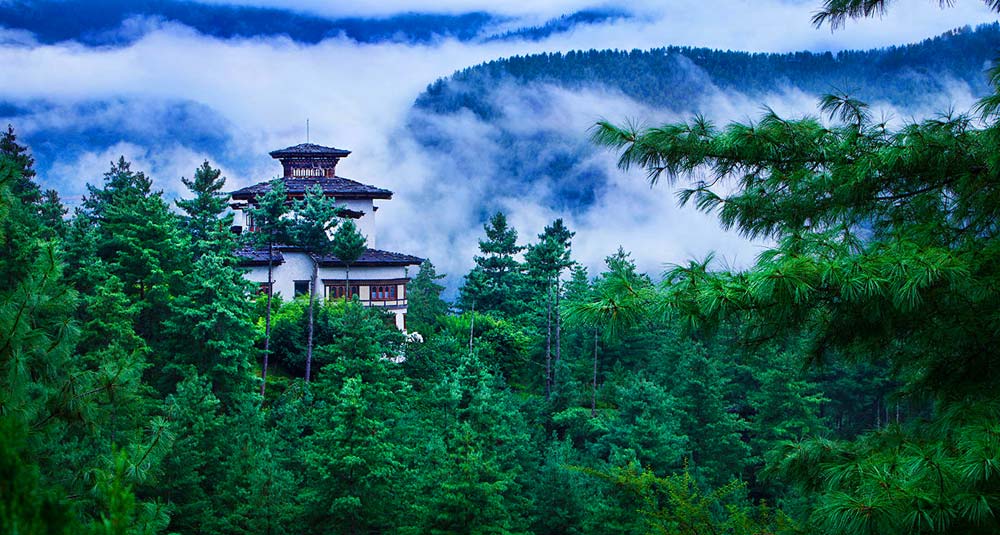
Situated in the valley of eastern Himalaya, Paro is a small and beautiful country in Himalayas with two storeys houses good looking, rectangular in plan decorated. It is bordered by Haa Dzongkha to the west, Tibet to the north, Thimpu to the east, and Chukha Dzongkha to the south. It is full of legends, heroism, and natural splendor and is home to some of the Bhutan's oldest temples, monasteries and the only airport of Bhutan. Rinpung Dzong built in 1646 by Shabdrung Ngwang Namgyal and Ta Dzong watch tower built to defend Rinpung Dzong during inter-valley wars of the 17th Century, now holds the National Museum is worth a visit. Taktshang, or Tiger's Nest, Kyichu Lhakhang the oldest temple, Drukgyel Dzong, at ruins since a fire in the 1950s. Rinpung Dzong where the movie Little Buddha was filmed are all beautiful sites to be visited around the town of Paro.
PUNAKHA
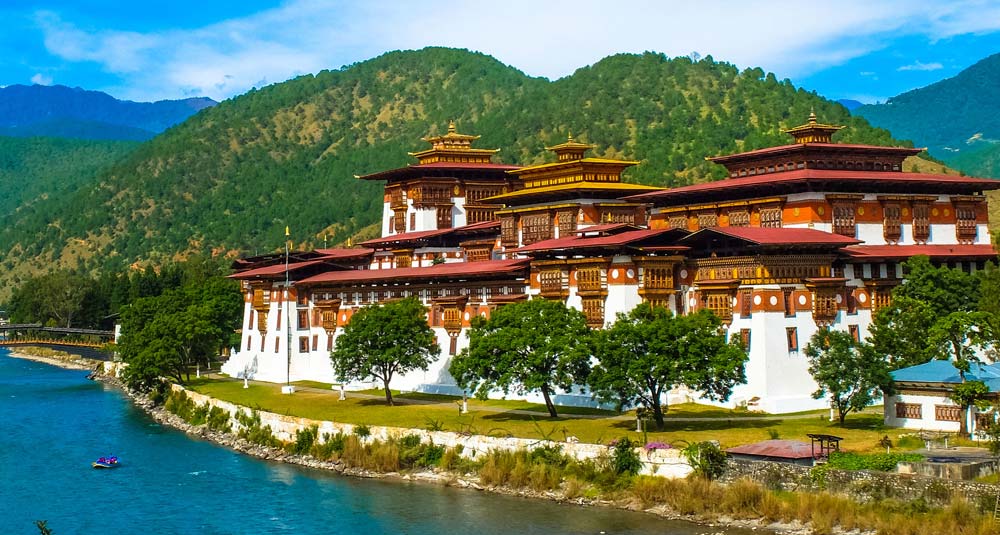
It is the administrative centre of Punakha Dzongkha, it is about 72 kilometers and it is about 3 hours drive by car from Thimphu situated at an elevation of 1200 meters with mountains covered with vast pine woods, winding roads and the snow covered peaks of the Himalayas. Punakha is bordered by Thimphu, Gasa, and Wangdue Phodrang all are of tourist interest. It's a picturesque town and the weather is quite warm in winter and hot in summer. Rice is grown as the as the major crop along the valleys of two rivers Pho Chu and Mo Chu. The village named Ritsha is famous for rice cultivation and the plantation area also has papaya and orange plants growing in between. Punakha dzong is beautifully located along the river but is vulnerable to flash flooding caused by glacial lake outburst flood and it was flooded thrice in 1957, 1960 and 1994. Few noticeable object is the is that you come across with prayer flags - some small square flags strung together and other single flags on a pole by themselves
Thimpu
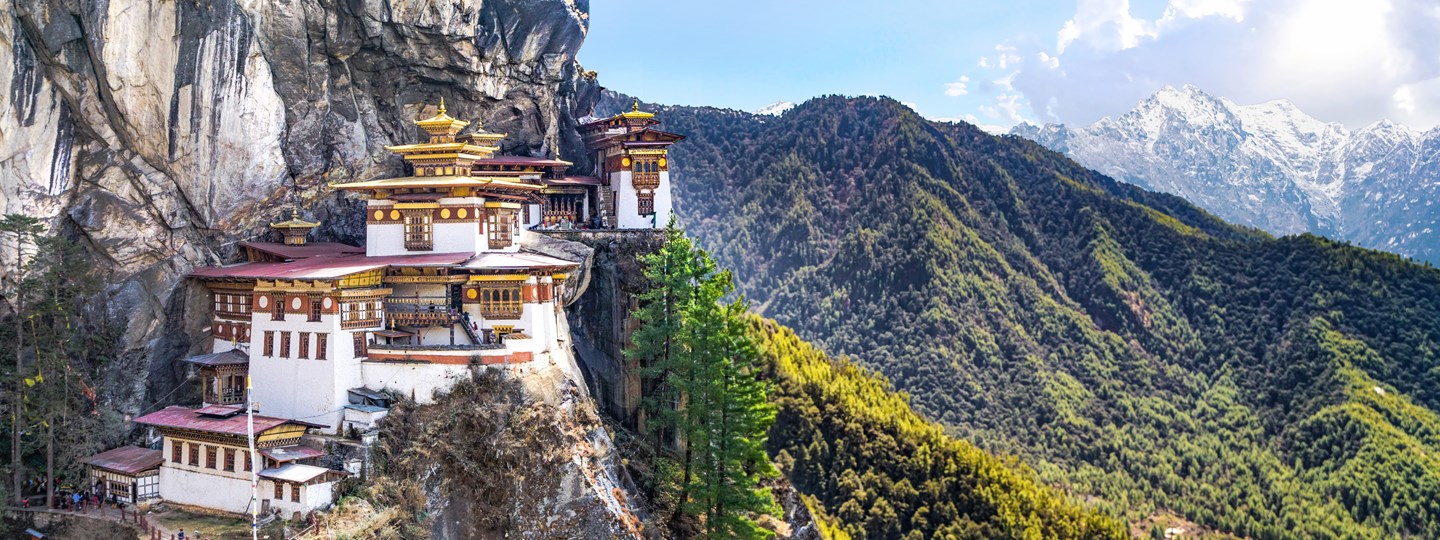
It is perhaps the smallest capital in the world and is pure and ethnic gallery of traditional Bhutanese art, architecture, culture, and tradition, located across the western slopes of the Wang Chhu river valley. This is the center of Bhutan and the financial and tourism hub situated at an altitude of 2,320 meters, even a walk through Norzin Lam the main thoroughfare is worth. It is perhaps the only world capital without any traffic lights. The places to visit in Thimpu is the Memorial Chorten, dedicated to the late King Jigme Dorji Wangchuk, Tashichho Dzong, the summer residence of the central monk body, the traditional medicine hospital where herbal medicines are prepared. The National Library, a treasure trove of ancient texts and the institute of Zorig Chosum for thanka painting, sculpture, wood and slate carving, gold works and embroidery.
Phuntsholing

Phuntsholing, also spelled as Phuentsholing is a border town in southern Bhutan and is the administrative seat of Chukha District. The town occupies parts of both Phuentsholing Gewog and Sampheling Gewog. Phuentsholing adjoins the Indian town of Jaigaon, and cross-border trade has resulted in a thriving local economy. The town has the headquarters of the Bank of Bhutan previously but shifted to Thimphu. In 2017, Phuentsholing had a population of 27,658.
Wangdue Phodrang
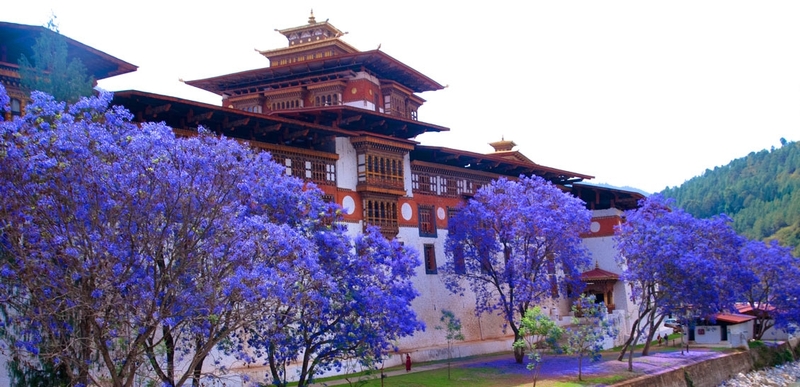
The town shares its name with the dzong built in 1638 that dominates the district. The name is said to have been given by Ngawang Namgyal, the 1st Zhabdrung Rinpoche, who was searching for the best location for a dzong to prevent incursions from the south. At the chosen spot, the Zhabdrung encountered a boy named Wangdi playing beside the river and hence named the dzong "Wangdi's Palace".
Trongsa
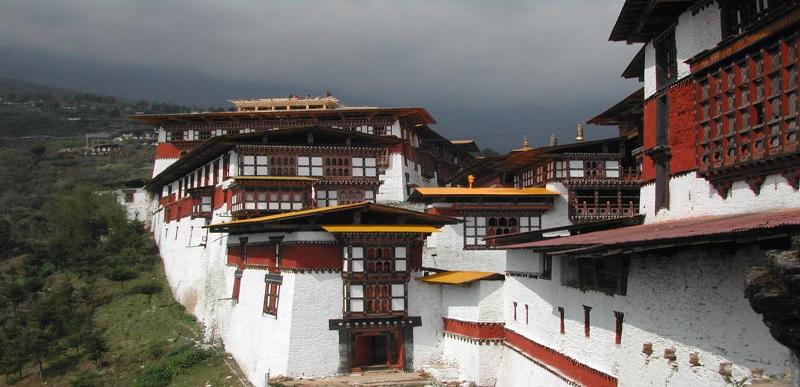
Trongsa which was built in 1644, used to be the seat of power of the Wangchuck dynasty before it became rulers of Bhutan in 1907. Traditionally the King of Bhutan first becomes the Trongsa Penlop (governor) before being named Crown Prince and eventually King. Built on a mountain spur high above the gorges of the Mangde Chhu, the dzongcontrolled east-west trade for centuries. The only road connecting eastern and western Bhutan (the precursor to the modern Lateral Road), passed through the courtyard of the dzong.